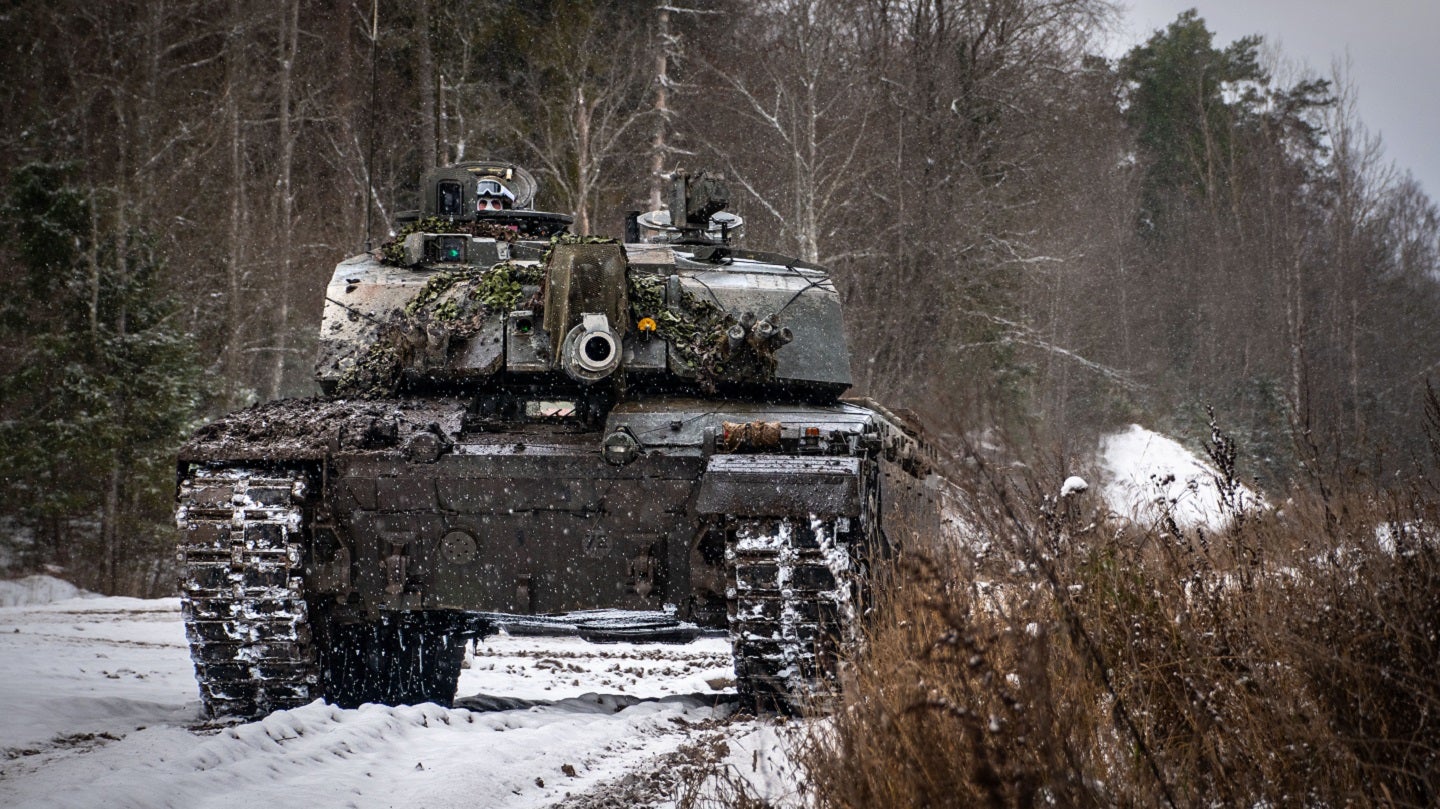
The British Army has just 157 Challenger 2 main battle tanks (MBTs) either on or available to undertake operations within a 30-day work-up period, out of a theoretical fleet of 227 vehicles.
The figure was disclosed during a UK Defence Committee session on 8 March that was exploring key defence programmes being undertaken and the country’s response to the ongoing Ukraine-Russia war, including the continued provision of essential war materiel to Kyiv.
Earlier this year, the UK publicly announced that it would donate a squadron of 14 Challenger 2 MBTs to Ukraine to aid the country it its war effort, a move that prompted US and European allies to follow suit and pledge the M1A2 Abrams and Leopard 2 types respectively. Ukraine will receive 14 operational Challenger 2s taken directly from the operational fleet, with 14 then brought up from long-term storage to backfill the UK operational fleet.
Ukrainian forces have begun operational training on the Challenger 2, with the platform potentially ready to deploy to Ukraine by the end of the month.
In the UK’s 2021 Integrated Review (IR) and Defence Command Paper (DCP), it was revealed that 148 of the country’s Challenger 2 MBTs would be upgraded to a Challenger 3 variant, featuring active protection systems, improved sensors and optics, as well as a new turret and the Rheinmetall L55A1 120mm smoothbore gun.
However, in light of the ongoing Ukraine-Russia war, which has seen the massed used of armour as well as countermeasures such as loitering munitions and improved dismounted anti-tank weapons, the UK is undertaking a ‘refresh’ of the IR and DCP. Speaking in Parliament, the UK Secretary of State for Defence Ben Wallace said that part of the assessment will be to determine whether more than 148 Challenger 2 tanks would be upgraded to the Challenger 3.
What chance a change at the IR refresh?
Given the current numbers of Challenger 2 tanks available for operations, and the materiel state of the remaining 70 vehicles in storage, it is not clear how many more could be upgraded. Taking current numbers and discounting vehicles in storage, a theoretical increase could be for as few as nine extra Challenger 3 tanks, should the refreshed IR and DCP deem the planned 148 upgraded tanks to be insufficient.
Challenger 2 tanks still in storage will be in a range of conditions, from those that need considerable working up before being made ready for operations, to platforms that have been cannibalised for spare parts and in effect unserviceable. Many of the parts and production lines for the Challenger 2 have closed since it first entered service with the British Army in 1998, leaving stored platforms as the only resource for spare parts.
Only the Sultanate of Oman became as export customer for the Challenger 2, concluding delivery of 38 MBTs in 2001. The lack of depth of the UK’s heavy armour element has raised concerns over its ability to sustain operations beyond the opening days in an environment as contested as seen in Ukraine. In context, from 24 February to 21 December 2022, Russia and Ukraine lost a combined total of 2,021 tanks of all types, split 1,585 and 436 respectively, or more than 12 times the number of Challenger 2 MBTs available for operations.







